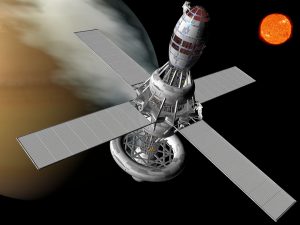 Space debris has become an increasingly common concern among space agencies. Statistics show that there are more than a half-million pieces of space debris flying above the Earth. And what goes up must go down. When space debris falls, it increases the risk of serious injury or death. Airbus, however, has come up with a bold plan to clean up Earth’s orbit by removing this debris.
Space debris has become an increasingly common concern among space agencies. Statistics show that there are more than a half-million pieces of space debris flying above the Earth. And what goes up must go down. When space debris falls, it increases the risk of serious injury or death. Airbus, however, has come up with a bold plan to clean up Earth’s orbit by removing this debris.
The Defense and Space department of Airbus has been working on a new project for the past few years to clean up space debris. According to the aerospace company, it’s tracking roughly 20,000 pieces of space debris larger than 10 centimeters. So, how does Airbus intent to remove the debris?
Airbus wants to use harpoons to capture space debris and bring it safely back to Earth. When speaking about the project, Airbus’s Alastair Wayman explained that cleaning up space debris poses two major challenges: capturing it and bring it down. The harpoon solves these challenge, as Airbus can effectively “grab” the debris while it’s in Earth’s orbit.
“There’s kind of two challenges to space debris, one is capturing it and one is then actually bringing it down once you’ve captured it,” explained Alastair Wayman, project systems engineer at Airbus. “And the harpoon is a really nice way to capture it. It really simplifies that because all we have to do is stand away from the target by a reasonable distance and fire at it. We don’t have to go up to it and actually get in contact with it at all.”
Space debris comes in all shapes and sizes, but it’s usually the larger pieces that pose the greatest threat. When two large satellites collide with each other, for instance, they can break into thousands of smaller, harder to capture pieces. The Kessler Syndrome is a proposed concept in which orbital satellites collide to create a chain reaction in which dozens of other satellites smash together and break up, thus disrupting global communications while sending tons of debris falling down to Earth in the process.
Airbus says it’s already tested the harpoon in a laboratory, and it was able to penetrate the outer casing of the satellite before deploying the barbs to secure the satellite. It’s next goal is to launch a test version of the harpoon and a fake piece of space junk into orbit to see if it can capture it using this system.



